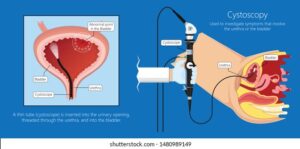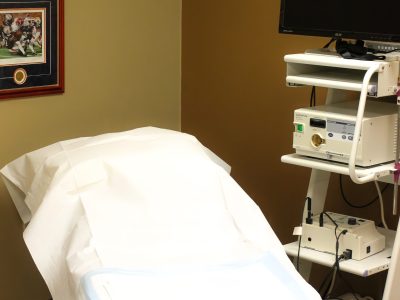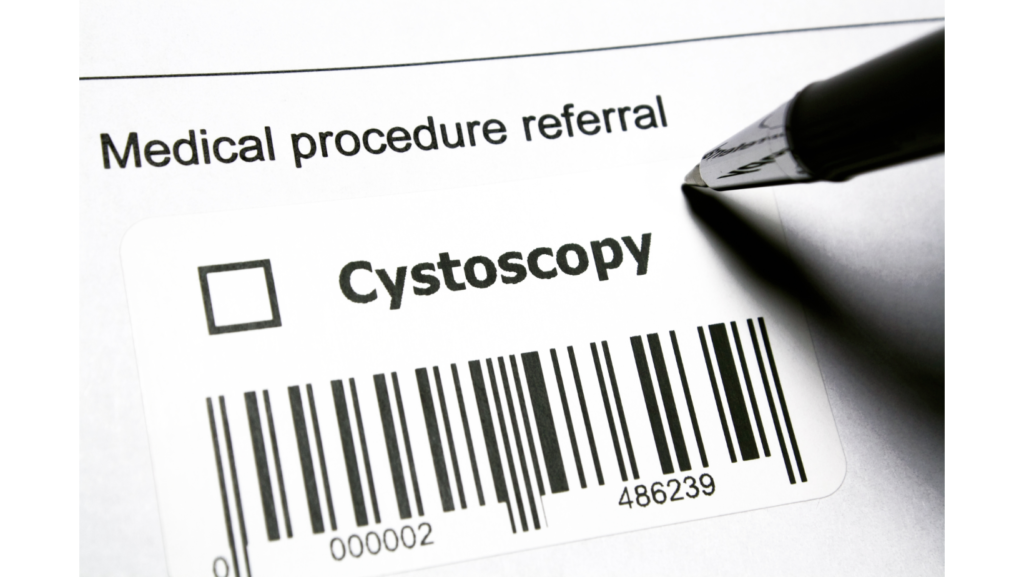De-Mystifying a Cystoscopy Procedure
A cystoscopy is a straightforward procedure. The purpose of a cystoscopy is to allow your urologist to examine your urethra and bladder for the causes or your symptoms. Your urology physician will perform the procedure within their office where the procedure can take 10 to 20 minutes to complete. At Tennessee Valley Urology Center, we have a dedicated cystoscopy room for these procedures.

Why Do I Need a Cystoscopy?

Your doctor will recommend a cystoscopy if you experience:
- Recurring urinary tract infections
- Pain when urinating
- Suspected bladder stones
- Urinary incontinence (unable to prevent urine flow)
- Urinary retention (unable to fully empty the bladder)
- Blood in the urine (hematuria)
What is a Cystoscopy?
The cystoscopy procedure uses a cystoscope: a camera attached to a long thin rod that can be either flexible or rigid. During the process, the cystoscope is slowly inserted into the urethra, the tube that carries urine out of your body and into the bladder. It allows your doctor to examine the urethra and the bladder lining, often to identify the cause of any bleeding or blockage or to find abnormalities in the bladder lining. It’s also sometimes called a cystourethroscopy, but this name is less common.
Does cystoscopy hurt?
The procedure can be uncomfortable but is not painful. Your urology doctor will apply pain-numbing medicines for the cystoscope procedure to numb the urethra. Depending on the purpose of the cystoscopy, there are two types of procedures.

Tennessee Valley Urology Center, Cleveland TN

What are the 2 Types of Cystoscopy?
A flexible cystoscopy allows your urologist to see inside your bladder using a long, flexible tube, approximately the width of a pencil with a camera on the tip. A rigid cystoscope is a long rigid tube with a camera attached, slightly thicker than a pencil. It is is generally used if your doctor needs to carry out treatments. This can include removing a stent or bladder stone or injecting medicine into the bladder. It’s also used for taking a tissue sample (biopsy).
Cystoscopy vs Ureteroscopy?
What is the difference?
A cystoscopy procedure is only used to look at or work on, the urethra and bladder. If your doctor wants to see past the bladder, they will use a device designed to go into the ureter and the kidney. This procedure is called ureteroscopy, and the instrument used is called a ureteroscope.
If you are worried about your symptoms, talk to us today
Read More About Specific Urological Conditions and Procedures
Preparing for a Cystoscopy?
Before a Cystoscopy
Before your procedure, your doctor may take a urine sample to check for a urinary tract infection. If the test is positive, you will be prescribed treatment, and the procedure will be delayed until the infection is cleared.
The procedure itself is fairly straightforward. You will need to empty your bladder first and then lay on the exam table, where your doctor will insert the cystoscope.
Cystoscopy Recovery
If a flexible cystoscope is used during the procedure, you will get back to normal immediately after the procedure. It means you can resume your usual routine when it comes to work, exercise, and sexual activities.
However, if a rigid cystoscope was used for your procedure, it may take longer to return to normal. You may experience discomfort after the procedure that persists for a few days, especially during urination. You may also find blood in your urine during this time due to mild irritation in the urethra.
Cystoscopy Risks
A cystoscopy is a fairly minor and safe procedure. However, there are risks to any medical procedure. The main risks during a cystoscopy are:
- Sometimes a UTI may be contracted during the procedure
- Difficulty urinating because of swelling
- Bleeding, which is usually mild
These risks are usually mild and will pass with time. However, on rare occasions, more severe complications can occur. Generally, if you experience side effects for longer than a few days or more pain than expected, you should return to your doctor for a follow-up.
